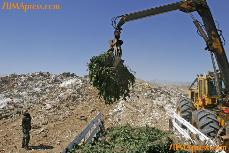While excavating the ruins of a colonial Japanese sugar plantation in Hawaii three summers ago, my archaeological team came upon a cultivation of marijuana plants situated subtly in the heaps of cane grass. The team leader, Janet Six from the University of Hawaii, looked around and caught glances of nearby locals and instructed us to leave the vicinity.
We dropped our machetes and ran out of the forest, in fear of the drug lords gunning us down with an AK-47 in paradise, not the way I pictured myself dying.
The next day, the team returned to the cane grass, and all the plants had been harvested; the area was completely desolate.
“Summertime is more than hot weather and big crowds for America’s national parks. It’s also the growing season – the marijuana growing season,” said CNN anchor Anderson Cooper.
Growing marijuana is a major industry, and it is grown in local parks and homes.
Growing cannabis plants in the outdoors is detrimental to nature. Moreover, about 60 percent of marijuana plants found in California alone were on public land, meaning that it is exposed to the residents and animals within the region.
The more secretive the plant garden, the harder it is for government officials to eradicate the illegal growth of marijuana.
According to The Los Angeles Times, California has about 4.2 million indoor plants valued at nearly $1.5 billion. Washington has approximately $438 million worth of indoor marijuana plants. Overall, the U.S. alone produces over $35 billion worth of marijuana.
U.S. officials say that the biggest threat to national parks is the growing of illegal marijuana plants within national forests. For decades, people have been growing the cannabis plants in homes or on private land. But as the years pass, the growth of these plants increases and expands onto public land.
“This is massive-scale agriculture that is threatening the very mission of the national parks, which is to preserve the natural environment in perpetuity and provide for safe public recreation,” said Bill Tweed, chief naturalist at Sequoia National Park in California, to Boston University Press. “Growers are killing wildlife, diverting streams, introducing non-native plants, creating fire and pollution hazards, and bringing the specter of violence.”
Many young people believe marijuana is harmless; it is not harmless to our environment.
“It screws over our eco-system,” said sophomore biology major, Hannah Pioli. “There needs to be a balance. (There is) no natural predator, so there is nothing that eats it. If you have an invasive species, there is no balance. Natural species in that area will die.

